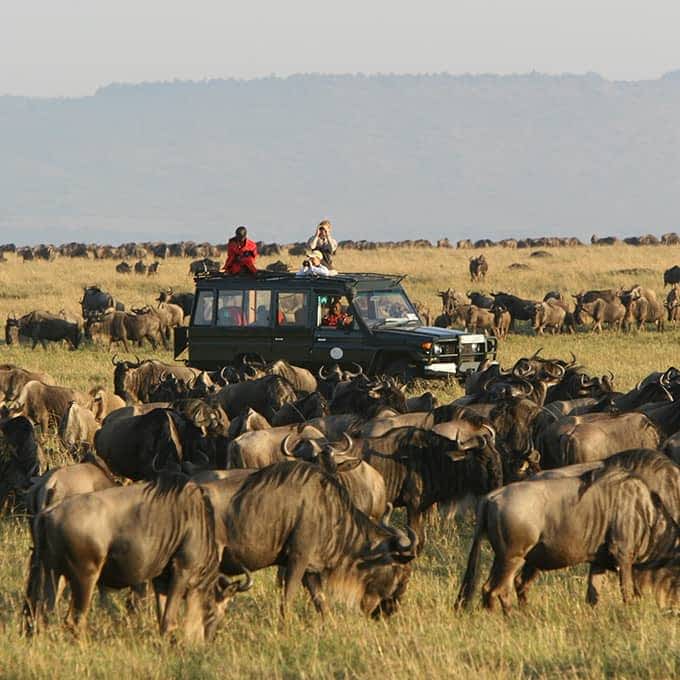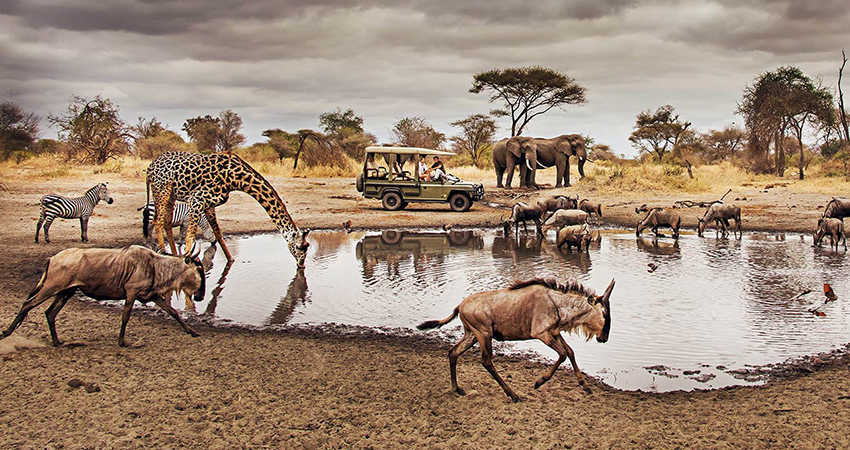Classic Safari: Kenya & Tanzania
When it comes to iconic African safaris, Kenya and Tanzania remain unmatched. Together, these East African countries offer some of the most diverse and breathtaking wildlife experiences in the world. From the rolling savannas of the Maasai Mara to the sprawling plains of the Serengeti, a classic safari in Kenya and Tanzania allows travellers to witness Africa’s most famous wildlife spectacles, including the Great Migration, predator-prey dynamics, and close encounters with the Big Five.

Why Kenya and Tanzania Are Safari Classics
Kenya and Tanzania are often considered the heart of East African wildlife tourism. Their national parks and reserves host large populations of lions, elephants, leopards, cheetahs, buffaloes, and rhinos. The landscapes range from grassy plains to acacia-dotted savannas, volcanic craters, and scenic lakes, creating habitats that attract a remarkable variety of animals. The region’s infrastructure, experience in wildlife tourism, and abundance of lodges and camps make it ideal for both first-time and seasoned safari-goers.
Key Safari Destinations in Kenya
Maasai Mara National Reserve
The Maasai Mara is Kenya’s flagship safari destination, famous for its vast savannas and abundant wildlife. It is particularly renowned for the Great Migration, where millions of wildebeest and zebras move between the Serengeti and Maasai Mara in search of fresh grazing. Lion prides, cheetah sightings, and elephant herds are highlights of this classic safari spot.
Amboseli National Park
Amboseli is famous for its large elephant herds and the backdrop of Mount Kilimanjaro, Africa’s highest peak. The park offers excellent photographic opportunities, with wildlife often seen grazing against the iconic mountain silhouette.
Lake Naivasha and Nakuru National Park
These areas are rich in birdlife, particularly flamingos, and offer diverse safari experiences. Nakuru National Park is also home to rhinos, giraffes, and lions, providing a more intimate wildlife encounter compared to larger savanna parks.
Key Safari Destinations in Tanzania
Serengeti National Park

The Serengeti is Tanzania’s crown jewel and home to the Great Migration for much of the year. The endless plains make it easy to spot lions, cheetahs, and leopards, as well as vast herds of zebras and wildebeest. Visitors can also enjoy hot air balloon safaris for a unique perspective over the landscape.
Ngorongoro Crater
This volcanic caldera is one of the most spectacular natural formations on Earth. The crater floor is teeming with wildlife, including lions, elephants, buffalo, rhinos, and hundreds of bird species. The Ngorongoro Crater offers a compact safari experience, allowing visitors to observe multiple species within a single day.

Tarangire National Park
Tarangire is known for its impressive elephant populations and baobab trees. The park’s seasonal rivers attract a variety of wildlife, offering excellent opportunities for photography and animal tracking during the dry season.
Tips for a Classic Safari in Kenya and Tanzania
Travellers should plan for early morning and late afternoon game drives, as wildlife is most active during these hours. Hiring experienced guides ensures better sightings and deeper understanding of animal behaviour. Staying in a mix of tented camps, lodges, and luxury safari accommodations allows visitors to experience the wilderness comfortably. It’s also essential to pack neutral-coloured clothing, binoculars, a camera, and sun protection.
Plan Your Classic Safari with African Wild Trekkers
A classic safari through Kenya and Tanzania is a once-in-a-lifetime experience that combines the thrill of wildlife viewing with breathtaking landscapes and cultural encounters. African Wild Trekkers specialises in designing tailor-made itineraries, guiding you to the best parks, arranging accommodations, and ensuring a seamless safari experience.
Book Your Safari Today
Contact African Wild Trekkers to plan your safari in Kenya and Tanzania and witness Africa’s most iconic wildlife in their natural habitat.